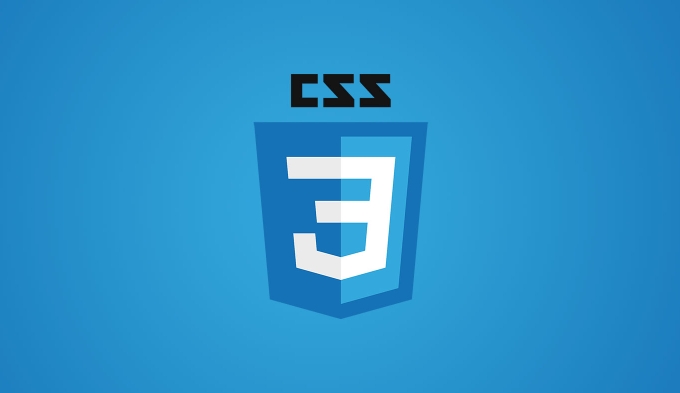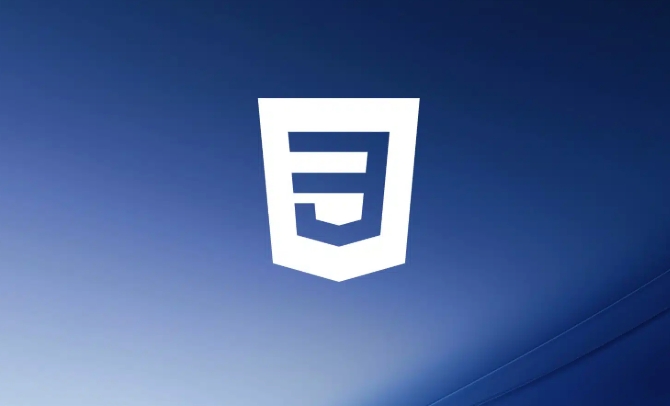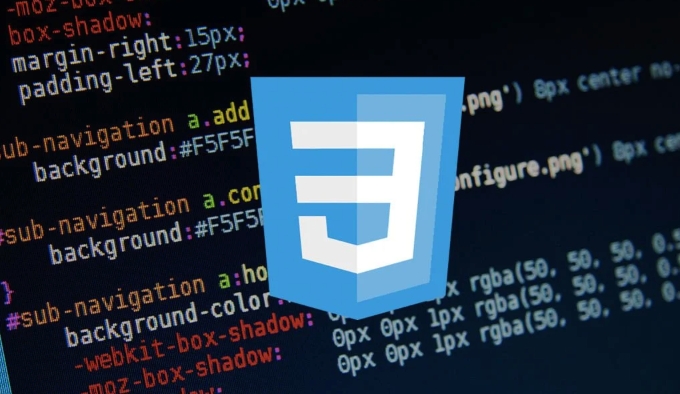 Web Front-end
Web Front-end
 CSS Tutorial
CSS Tutorial
 How to select all anchor tags that open in a new tab using attribute CSS Selectors for target='_blank'?
How to select all anchor tags that open in a new tab using attribute CSS Selectors for target='_blank'?
How to select all anchor tags that open in a new tab using attribute CSS Selectors for target='_blank'?
Jun 30, 2025 am 01:20 AM
If you want to use the CSS selector to select all <a></a> tags (that is, the links to target="_blank" ) that are opened in the new tab page, the method is actually quite straightforward, which is to use the attribute selector.

You can write this way:

a[target="_blank"]
This selector will match all hyperlinks on the page with target="_blank" set. If you also want to add dot styles to these links, such as adding an external link icon or changing the color, you can write it like this:
a[target="_blank"] {
color: red;
padding-right: 20px;
background: url('external-icon.png') no-repeat right center;
}How to confirm whether your selector is effective?
Sometimes you may write a selector but don’t see any effect, which may be the following reasons:

- CSS is not preferred enough : Other styles override your rules, you can try to increase the selector weight or use
!important(abuse is not recommended). - HTML structure problem : Make sure your link does carry
target="_blank"attribute. - Caching issues : Refresh the browser or clear the cache to see if it takes effect.
You can use the browser's developer tools (right-click on the element → Check) to see if the corresponding link is correctly selected and view the style of the application.
How else can I expand this selector?
In addition to exact matching _blank , you can also do some more flexible or complex filtering:
Match all links with
targetattribute, regardless of the value:a[target]
Match the links where
targetvalue contains"blank"(note that this writing may match the case wheretarget="notblank"):a[target*="blank"]
But most of the time, we only need to accurately select links that will actually open in a new window, so the most recommended way is:
a[target="_blank"]
Examples of practical application scenarios
Common uses include:
- Add an icon to the external link to let the user know that this is jumping to another website.
- Change the color of the links opened in a new window and distinguish them from the links in the site.
- Use with JavaScript, for example, add
rel="noopener"to these links to prevent security vulnerabilities.
For example, you want to add rel="noopener" to all external links. Although it cannot be done with CSS, you can combine JS and this selector to do it:
document.querySelectorAll('a[target="_blank"]').forEach(link => {
link.rel = 'noopener';
});Basically these are the operations. This selector is simple but practical, suitable for link style management and behavior control.
The above is the detailed content of How to select all anchor tags that open in a new tab using attribute CSS Selectors for target='_blank'?. For more information, please follow other related articles on the PHP Chinese website!

Hot AI Tools

Undress AI Tool
Undress images for free

Undresser.AI Undress
AI-powered app for creating realistic nude photos

AI Clothes Remover
Online AI tool for removing clothes from photos.

Clothoff.io
AI clothes remover

Video Face Swap
Swap faces in any video effortlessly with our completely free AI face swap tool!

Hot Article

Hot Tools

Notepad++7.3.1
Easy-to-use and free code editor

SublimeText3 Chinese version
Chinese version, very easy to use

Zend Studio 13.0.1
Powerful PHP integrated development environment

Dreamweaver CS6
Visual web development tools

SublimeText3 Mac version
God-level code editing software (SublimeText3)

Hot Topics
 What is 'render-blocking CSS'?
Jun 24, 2025 am 12:42 AM
What is 'render-blocking CSS'?
Jun 24, 2025 am 12:42 AM
CSS blocks page rendering because browsers view inline and external CSS as key resources by default, especially with imported stylesheets, header large amounts of inline CSS, and unoptimized media query styles. 1. Extract critical CSS and embed it into HTML; 2. Delay loading non-critical CSS through JavaScript; 3. Use media attributes to optimize loading such as print styles; 4. Compress and merge CSS to reduce requests. It is recommended to use tools to extract key CSS, combine rel="preload" asynchronous loading, and use media delayed loading reasonably to avoid excessive splitting and complex script control.
 External vs. Internal CSS: What's the Best Approach?
Jun 20, 2025 am 12:45 AM
External vs. Internal CSS: What's the Best Approach?
Jun 20, 2025 am 12:45 AM
ThebestapproachforCSSdependsontheproject'sspecificneeds.Forlargerprojects,externalCSSisbetterduetomaintainabilityandreusability;forsmallerprojectsorsingle-pageapplications,internalCSSmightbemoresuitable.It'scrucialtobalanceprojectsize,performanceneed
 Does my CSS must be on lower case?
Jun 19, 2025 am 12:29 AM
Does my CSS must be on lower case?
Jun 19, 2025 am 12:29 AM
No,CSSdoesnothavetobeinlowercase.However,usinglowercaseisrecommendedfor:1)Consistencyandreadability,2)Avoidingerrorsinrelatedtechnologies,3)Potentialperformancebenefits,and4)Improvedcollaborationwithinteams.
 CSS Case Sensitivity: Understanding What Matters
Jun 20, 2025 am 12:09 AM
CSS Case Sensitivity: Understanding What Matters
Jun 20, 2025 am 12:09 AM
CSSismostlycase-insensitive,butURLsandfontfamilynamesarecase-sensitive.1)Propertiesandvalueslikecolor:red;arenotcase-sensitive.2)URLsmustmatchtheserver'scase,e.g.,/images/Logo.png.3)Fontfamilynameslike'OpenSans'mustbeexact.
 What is Autoprefixer and how does it work?
Jul 02, 2025 am 01:15 AM
What is Autoprefixer and how does it work?
Jul 02, 2025 am 01:15 AM
Autoprefixer is a tool that automatically adds vendor prefixes to CSS attributes based on the target browser scope. 1. It solves the problem of manually maintaining prefixes with errors; 2. Work through the PostCSS plug-in form, parse CSS, analyze attributes that need to be prefixed, and generate code according to configuration; 3. The usage steps include installing plug-ins, setting browserslist, and enabling them in the build process; 4. Notes include not manually adding prefixes, keeping configuration updates, prefixes not all attributes, and it is recommended to use them with the preprocessor.
 What are CSS counters?
Jun 19, 2025 am 12:34 AM
What are CSS counters?
Jun 19, 2025 am 12:34 AM
CSScounterscanautomaticallynumbersectionsandlists.1)Usecounter-resettoinitialize,counter-incrementtoincrease,andcounter()orcounters()todisplayvalues.2)CombinewithJavaScriptfordynamiccontenttoensureaccurateupdates.
 CSS: When Does Case Matter (and When Doesn't)?
Jun 19, 2025 am 12:27 AM
CSS: When Does Case Matter (and When Doesn't)?
Jun 19, 2025 am 12:27 AM
In CSS, selector and attribute names are case-sensitive, while values, named colors, URLs, and custom attributes are case-sensitive. 1. The selector and attribute names are case-insensitive, such as background-color and background-Color are the same. 2. The hexadecimal color in the value is case-sensitive, but the named color is case-sensitive, such as red and Red is invalid. 3. URLs are case sensitive and may cause file loading problems. 4. Custom properties (variables) are case sensitive, and you need to pay attention to the consistency of case when using them.
 Case Sensitivity in CSS: Selectors, Properties, and Values Explained
Jun 19, 2025 am 12:38 AM
Case Sensitivity in CSS: Selectors, Properties, and Values Explained
Jun 19, 2025 am 12:38 AM
CSSselectorsandpropertynamesarecase-insensitive,whilevaluescanbecase-sensitivedependingoncontext.1)Selectorslike'div'and'DIV'areequivalent.2)Propertiessuchas'background-color'and'BACKGROUND-COLOR'aretreatedthesame.3)Valueslikecolornamesarecase-insens





